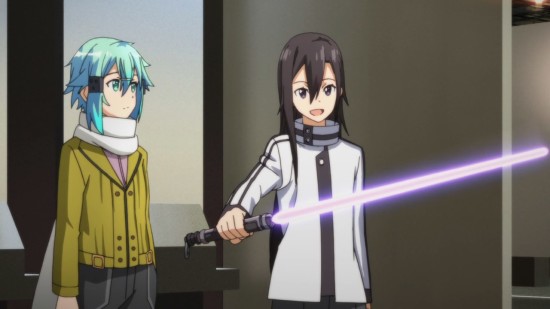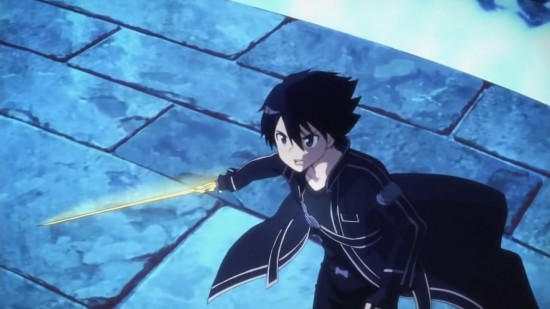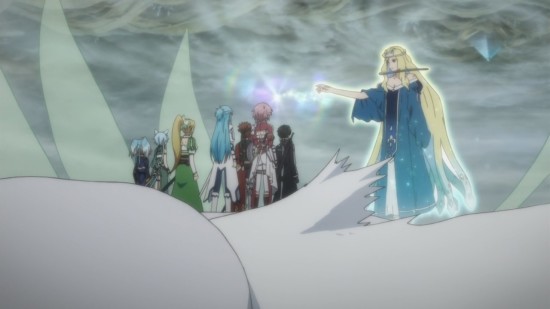 2014 actually had some nice surprises in anime. One was that the second season of Sword Art Online (Crunchyroll) was much better than the first.
2014 actually had some nice surprises in anime. One was that the second season of Sword Art Online (Crunchyroll) was much better than the first.
It wasn’t that I hated the first season. If you remember my posts from that time you will recall that I thought that the first half was very weak while the second half redeemed it just enough to make it worth watching. The second season is a much better work from start to finish. I won’t hesitate to recommend it–though you still probably need to watch the first season first. (You might be able to catch up from the flashbacks in the second season but you wouldn’t really understand the characters without having seen what they went through.)
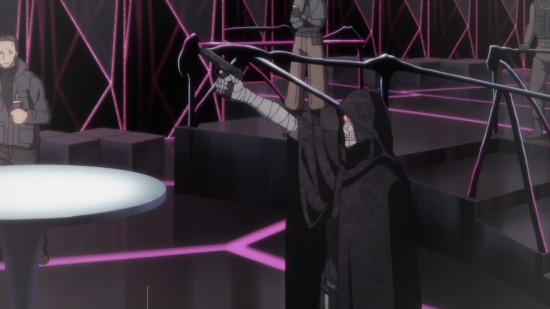
Here are some of the weaknesses of the first season that the second season improves on.
The first story arc of the first season had the characters trapped in a video game. (Not very original and basically pure wish-fulfillment.) This meant that the entire story (except for brief sequences at the beginning and end) took place inside the game world. This made it seem detached from reality and hard to care about.
The later stories cut back and forth between the real world and the game worlds, showing how the decisions the characters make in the game affect them in the real world, and vice versa. This makes the stories much more powerful and engaging.
A more important factor is that the characterization gets better and better as the series continues. At the beginning of the first season Kirito, the main character, was essentially a “Mary Sue.” In other words, a highly idealized, unrealistic, wish-fulfilling representation of the author. (The term comes from a notorious parody of fanfiction written by teenaged girls.) Such characters are often created by inexperienced authors.
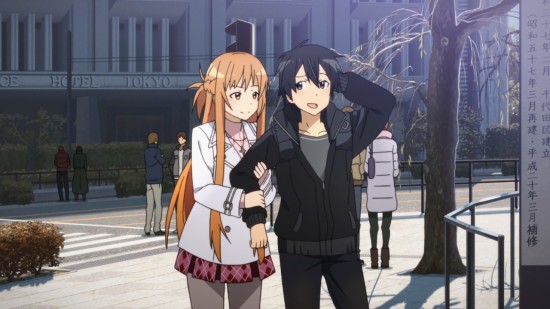
The main difference between a “Mary Sue” character, as opposed to a superhero for example, is that Mary Sue is the only significant character. Other characters exist only to admire or oppose Mary Sue; they have no lives of their own. The first season of Sword Art Online started to become enjoyable when Asuna started to develop as a character in her own right. She initially appeared just as a potential love interest for Kirito, but she quickly began to seem like a real person with her own goals and personality.
Unfortunately Asuna has a much-reduced role in the second story arc of the first season. That story gives much more screen time to Sugu, who is a well-developed character but a much less interesting one–mostly a bundle of teenaged angst.
But in the second season Asuna comes back with a bang. In fact she serves as the protagonist for the final story arc, in which Kirito has only a walk-on role.
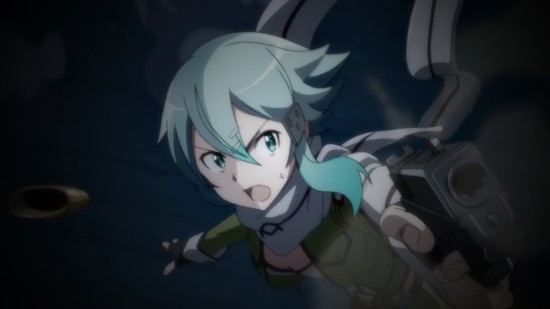
The second season adds two new strong characters. There’s Sinon, a troubled girl who plays a sniper in a game that features gunfighting in a post-apocalyptic world.
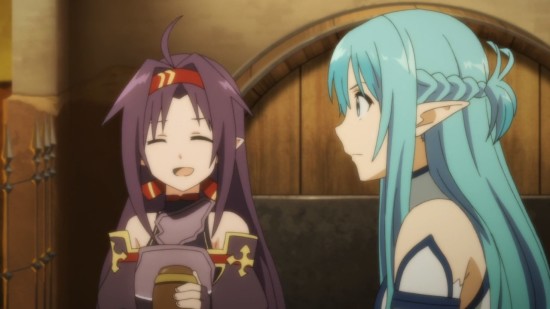
The final story arc introduces Yuuki, an unnaturally genki swordfighter in the revised Alfhiem game that the characters have created.
I don’t want to get into major spoilers here. I’ll just say that these stories seem to have a lot more philosophical and psychological depth than the stories from the first season. And that’s my final reason for saying that the second season is a big improvement.
